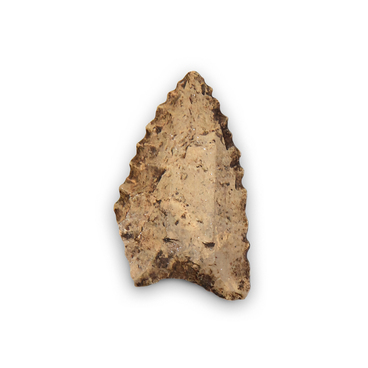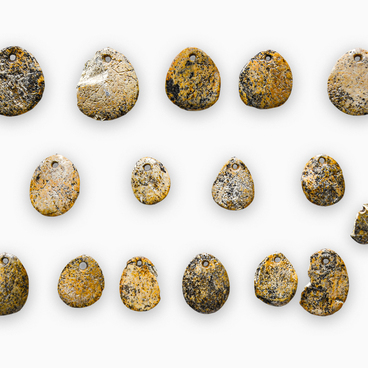This spindle is a wooden chiseled stick, extended at the tip to the upper end and thickened to the lower third. It is made on a turning machine, and the simplest circular pattern is also applied on it. The spindle is made of birch.
A spindle was used in spinning yarn, it helped to twist and wind threads pulled from a bundle of fibers. The use of the spindle has not changed since ancient times to the present day. At first, wool, linen or cotton is wound on it, then the spinner twists the thread. The spindle allowed the spinner to evenly twist the thread and then immediately wind it onto a special bobbin. Subsequently, it was used as the basis for the production of fabrics.
Depending on the size of the device, it was possible to spin a thread with a larger or smaller diameter. If one tries to twist a thin thread on a large spindle, nothing will work, because it will break under its weight. In order for the thread not to break and be long, a spinning wheel was put on the spindle whorl — a small weight with a hole. When spinning, the spindle rotated, twisting the thread. The spindle whorl served as a flywheel, which helped the working spindle to spin long and fast, which was necessary for strong and uniform twisting of the fibers pulled from the tow.
The spindle whorl was made of stone, clay, wood, glass, metal, and sometimes a pattern or inscription was applied to it.
In all Slavic and Finno-Ugric peoples of Eastern Europe, spinning women pulled a thread from a tow with their left hand, and with their right hand they turned a spindle. In the Caucasus and Central Asia, they did the opposite.
A hand spindle is one of the oldest tools. The earliest finds are known from the archaeological sites of the Ancient East. Numerous spindle whorls are found in the archaeological materials of the ancient Slavs, which also indicates the use of a spindle.
The spindle and all actions related to spinning have a sacred meaning: they
symbolize life itself and the continuity of time. The spindle acts as an
attribute of female deities associated with fate and death, who wind the
threads of human lives around it.


